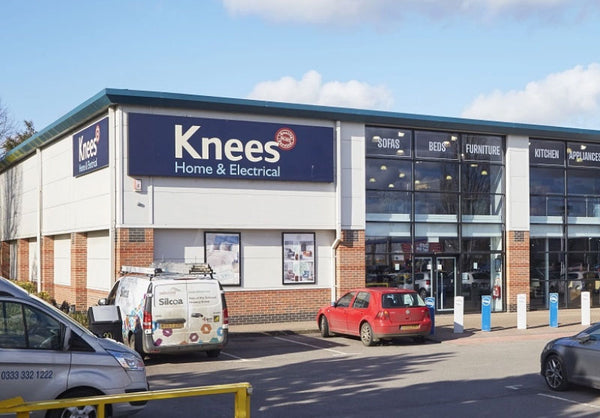The best induction hob for your kitchen
Induction hobs have grown hugely in popularity in the last few years. Their streamline design and sleek appearance mean that they fit in well with modern kitchens, while their versatility means they’re ideal for smaller spaces. They’re also very popular among professional chefs thanks to their fast cooking speeds and precision-controlled temperatures.
However, there are many different brands and types available, so choosing the right one for your kitchen is important. Read on to find out more about the pros and cons of induction hobs and how to select the right one for your needs.
How do induction hobs work?
Induction hobs work by directly heating a pan, rather than the hob ring itself. When the hob is turned on, it activates an electromagnetic field below its surface. When a pan is placed on this ring it completes the circuit, causing the molecules of the pan to vibrate, heating its surface. Once the pan is removed, the circuit is broken and the hob will stop generating heat. As with any technology, induction hobs have advantages and disadvantages. We briefly explore these below.Advantages of induction hobs
Cooking Speed
Whilst gas may deliver instant heat, this heat is directed to the surface of the pan and will need to permeate before it begins to cook the pan contents. Induction hobs, in contrast, heat the material of the pan. The result is reduced overall cooking time.
Energy efficiency
Induction hobs are only heating the pan, they are far more energy-efficient than other hob types. No heat is lost around the hob area in the same way as electric and gas hobs.
Safety
Induction hobs are also safer as they will only operate when a pan is placed on them, and as soon as the pan is removed, the hob will turn off. Unlike electric hobs, which heat the whole area around the cooker top, induction hobs cool down very quickly and so are safe to touch almost as soon as you’ve finished cooking. That means they’re ideal for family kitchens.
Easy to clean
Induction hobs are very easy to clean and maintain. As they have a flat surface, there are no joins or gaps where food could fall, so they can be easily cleaned with a soft cloth and warm soapy water. This not only makes for a clean and hygienic surface, but prolongs the life of your hob as there is no need to use harsh chemical cleaners or abrasive scrubbing brushes.
Easy to use
Induction hobs are very responsive and straightforward to operate. The heat can be easily controlled and targeted to specific areas for great results every time.
Disadvantages of induction hobs
Cookware
It’s important to remember that you can only use induction hobs with specific types of pans. These are not difficult to find but installing an induction hob may mean that you need to treat yourself to some new cookware. The best pans for induction hob use are made from stainless steel with wider, flatter bottoms which help to distribute heat evenly.
On the plus side, however, many induction hob suitable pans are also easy clean, so washing up is a breeze! If you’re looking for a great selection of the best pans for induction hob topped stoves, there at Knees Home & Electrical, we have a large range on offer.
Induction hobs are not suitable for everyone
Induction hobs are not recommended for those with pacemakers because they produce an electromagnetic field which can interfere with the pacemaker’s function.
Variable touch controls
The majority of induction hobs feature touchscreen style controls. Although these mean that the surface is easier to clean, they can be less responsive when damp.
How much energy does induction cooking use?
Cooking on induction hobs is far more energy-efficient than gas, or electric cooker tops. Induction hobs use an average power wattage of 1.95kW. This is similar to gas and ceramic hobs. However, because induction hobs are much quicker at cooking, they tend to use less energy. The average running cost of an induction hob in the UK is 33.5p per day, equating to around £120 per year.
Installation
Installing an induction hob is a fairly straightforward process, however, there are several things to consider.
An induction hob must be installed by a suitably qualified professional. When considering installation, you’ll need to check what type of electrical connection is required for your hob. Some induction hobs require power of over 3kW which requires a 16- or 32-amp fuse. However, if your new hob requires power below 3kW, then an ordinary plug socket should be fine.
It’s important to check the dimensions of your new hob (particularly the depth) to make sure that it will fit into the existing space. If your chosen hob is a different size to the one already in your kitchen, you might need to consider altering the kitchen’s layout.
Although induction hobs are very safe, it’s also necessary to have a clear area around the installation site, free from flammable materials such as wallpaper, and electrical switches.
If you are changing from gas to induction hobs, the gas line into your kitchen will need to be disconnected by a certified Gas Safety engineer before your new hob can be installed.
The price of installation can vary so it’s important to consider this in your budget. Here at Knees, we offer an installation service on our selection of induction hobs for customers within 25 miles of our stores and delivery countrywide using our delivery partner.
Budget
Induction hob prices vary significantly based on size, layout, and additional features. At Knees, prices range from £160 to £3300 so there is something to suit every budget. Finance options are also available if you’d prefer to spread the cost out over a period of time.
Choosing the right hob
Knees offer some of the most popular induction hob brands, including Neff, Bosch, AEG, and Elica. There are lots of different sizes and types to choose from.
Some induction hobs include additional features such as the PowerBoost function, available on Bosch, AEG, and others which gives more power for faster heating. There are also functions including inbuilt extractors to remove the need for overhead extractor fans.
Different hob configurations: you can choose between a traditional four-ring style hob or a flex-induction hob design, available from NEFF, Elica, Bosch and others, for a larger cooking area and more flexible heating. Once a flex-induction hob is switched on, the whole surface can be activated meaning that pans, kettles etc. can be placed anywhere on it to heat.
NEFF also offer a FlexZone hob which has three heating modes for different cooking requirements: boiling at the front, simmering in the middle, and warming at the back of the hob surface.



